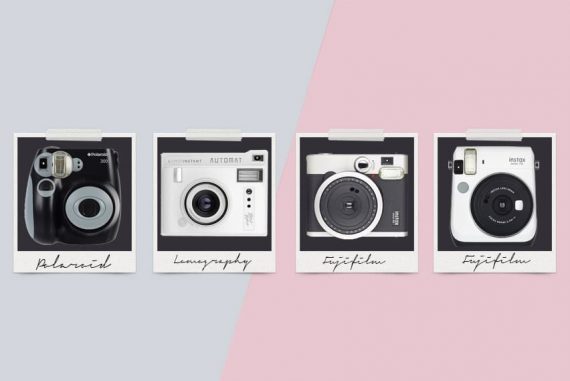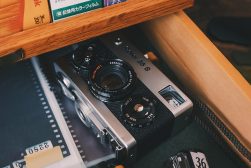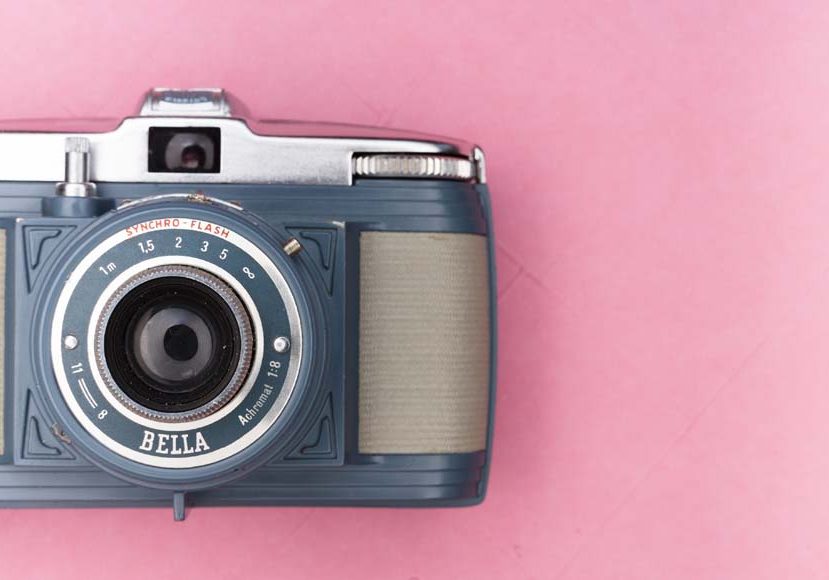
Beginners’ Guide to Lomography: Cameras, Technique & History
Everything you ever wanted to know about Lomography: what it is, how to do it, the best lomography cameras, and more!
Learn | By Ashley Darrow
Lomography is one of the most interesting styles of photography, but it’s also one that I think most photographers don’t know enough about.
I’m going to walk you through everything you need to know in this primer for Lomography.
I’ll be covering the history of the style, the best cameras to use for the Lomography, and some of the philosophy behind lomo.
Lomography has fundamentally changed how I approach photography in general, and I hope you’ll be just as inspired after reading my guide.
What Is Lomography?

Image Credit: Vitaly Gorbachev
Lomography is an avant-garde approach to photography that uses quirky camera gear to achieve a lo-fi aesthetic.
In a sense, lomography has always been around. There have always been photographers exploring odd equipment and pushing artistic bounds.
Lomography got its start as LOMO—the Leningrad Optical Mechanical Association. This was a company in the late Soviet Union which produced optical elements for the medical industry as well as cameras.
LOMO cameras are considered to be one of the best examples of the kind of cheap, mass-produced cameras that are great at creating the lomo effect.
Lomography as we know it kicked off in the early 1990s thanks to the work of The Lomographic Society International who also operate the newer Lomography brand.
The Lomography brand was once a copyrighted term, but now it’s generally used to describe the entire style and the cameras lomography photographers use.
Lomography sells updated versions of vintage cameras which makes this style more accessible to newcomers.
- Related: What is the best film camera to buy?
What Is a Lomography Camera and Why Is It Special?

Image Credit: ristina Paukshtite
Lomo has come to be a term that’s generally used for vintage cameras, budget cameras, toy cameras, and even your old instant camera.
These Lomography cameras are celebrated for their flaws. Grainy images, light leaks, and distortion all become part of the inherent qualities of a successful photograph.
A hazy image full of contrast and some distortion might not be acceptable on a modern digital camera, but these are all sought after qualities on a lomography camera.
Film photography has a reputation for being very expensive, but you can pick up a lomo camera with a lens for less than $50.
That budget camera will be more than enough for you to start creating images that will be recognized for their quality in the lomo scene.
So, what makes a lomography camera so special? It’s an embrace of the history of photography as well as avant-guard approaches to what counts as a “good photograph.”
I’ve got a section on the best lomography cameras later in this article, but for now, here are a few brands and cameras you can keep an eye out for:
- Lomo
- Holga
- Zenit
- Smena
- Horizon
- Any instant camera
5 Principles of Lomography
Lomography doesn’t have rules as much as it has guiding principles.
These are five of the most important tenets of lomography that have fundamentally changed how I approach photography in general.
1. Always Carry Your Camera
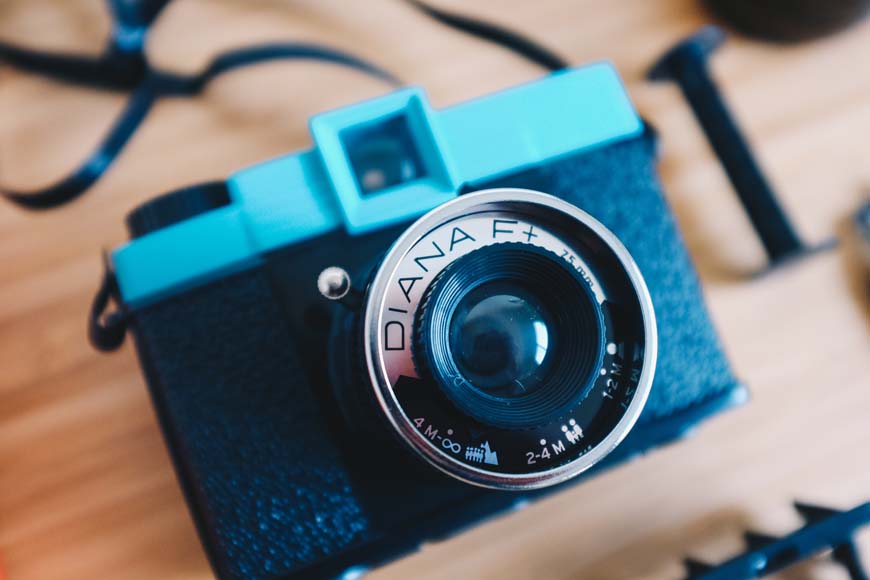
Image Credit: Bambi Corro
The most important thing you can do is always have your camera on you.
Thankfully, lomo cameras are typically pretty lightweight and easy to stash in any bag or even your pocket.
How Much Do You REALLY Know About Photography?! 🤔
Test your photography knowledge with this quick quiz!
See how much you really know about photography...

You also don’t have to worry about carrying around thousands of dollars of equipment since these cameras are usually on the cheaper side.
Day or night, try keeping at least a basic disposable camera by your side.
Life can be spontaneous and always carrying a camera lets you capture moments as they arise.
2. Don’t Think, Just Shoot

Image Credit: Markus Winkler
In the spirit of a good western movie, lomography shoots first and asks questions later.
Some of the most vibrant and interesting lomo photographers don’t plan on their shots. Rather than spending hours setting up your studio, head out into the world and discover your photography as it naturally occurs.
Lomography is, in essence, a radical new spin on photographic realism.
3. Try Radical New Approaches To Your Style

Image Credit: Markus Spiske
How do you usually approach your typical photo subject? When you’re trying out the lomo style, you should try a new approach.
Maybe you switch things up and shoot from the waste rather than through the viewfinder. You could also try getting as close as possible or shooting from dramatic angles rather than flat shots.
Start pushing the usual boundaries of your photos. You can turn on bulb mode, try multiple exposures, or shoot with instant film. Really, the goal is to be present with your style and start experimenting.
Don’t be afraid to overexpose, capture some distortion, or intentionally cause a light leak. These little imperfections are what make lomo so captivating to begin with.
4. Make Lomo Part Of Your Life

Image Credit: Nicholas Garman
I know so many photographers that plan and stage their shoots, but leave photography behind the same way you would treat a bad day job.
Lomo demands that photography become a part of your life rather than just a hobby.
Consider the quirky ways that you can incorporate photography into your daily life. You could transform your morning routine into a photo shoot or bring a camera with you on your next girls night out, for example.
5. You Set The Rules
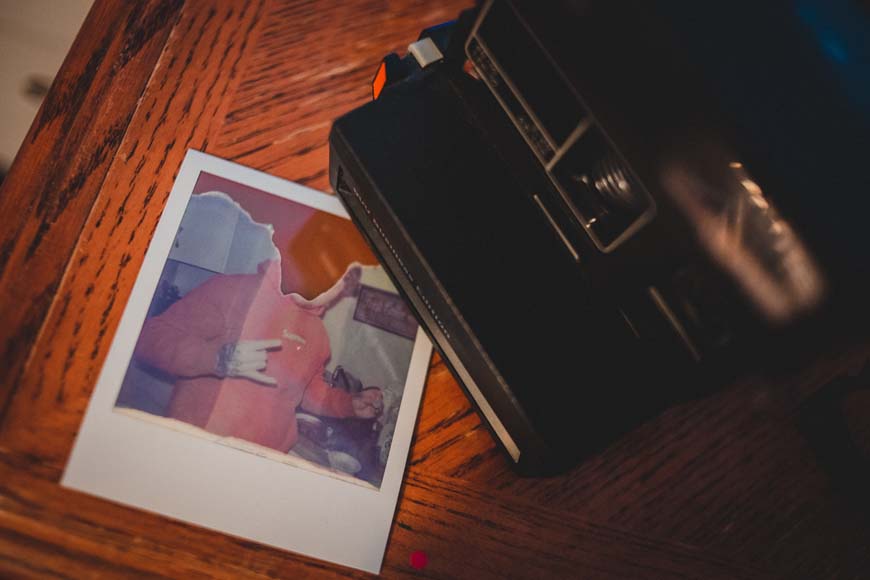
Image Credit: Erik Mclean
I know I said lomography doesn’t have rules, but you can treat these as challenges or the rules of a game.
Try giving yourself creative challenges like only shooting black and white when you would normally shoot color, intentionally trying to use distortion as part of your composition, or picking one of the best lomo cameras to explore some new toys—literally!
One last thing, lomo is one of the most open-ended photography styles. Embrace that freedom and get creative.
How to Do Lomography
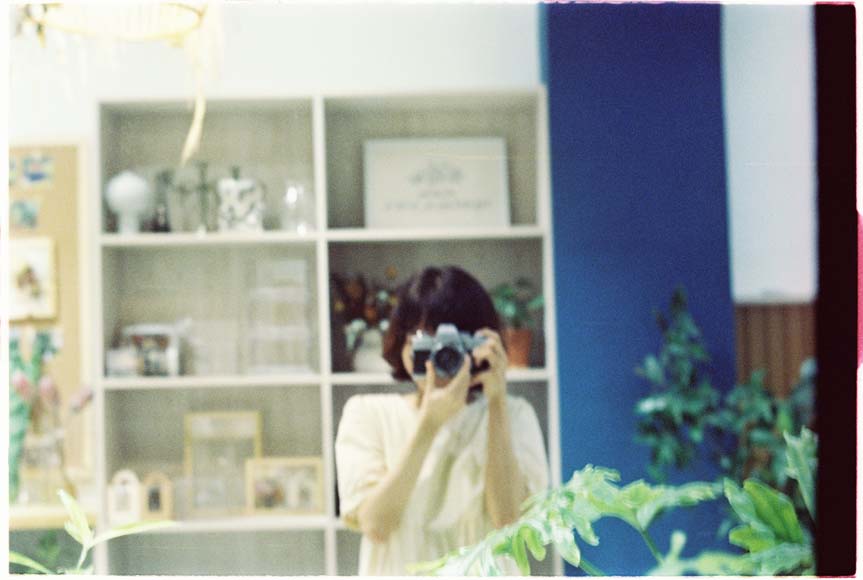
Image Credit: Thanh Tran
The first thing I want to say is that there’s no one way to do Lomography. There are as many approaches to lomo as there are lomo photographers.
With that said, here’s a three-part quick-start guide for beginner Lomography photographers.
The first thing you want to do is grab some retro or budget camera tech that you usually wouldn’t shoot with. This could be a vintage film camera, disposable camera, expired film stock, a toy camera, or even an older digital camera.
The next thing you should do is to start carrying that camera with you all the time. You never know when you’ll spot a scene that you want to capture and lomo is all about being spontaneous.
The third step is to keep iterating on your approach to the lomo style. Ditch what doesn’t work and what you don’t like while focusing on what catches your eye.
Lomography as a Philosophy of Life
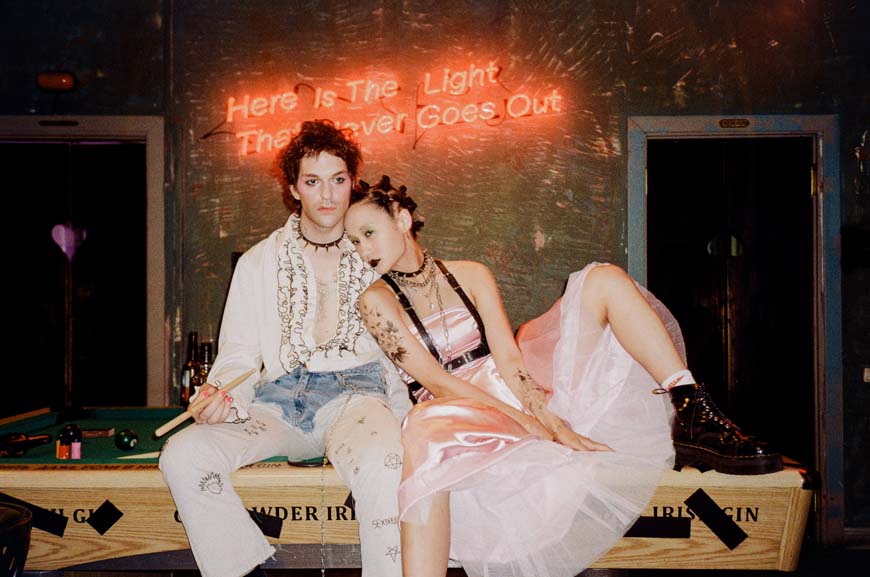
Image Credit: cottonbro studio
Every style of photography is deeply philosophical, but lomography is incredibly open and engaged with the ideas and theories behind it.
Lomo is a spontaneous act that focuses on capturing moments as they are lived rather than on constructing a technically perfect shot.
Lomography is also deeply technical, but focuses on the ignored aspects of photography formalism, like budget cameras, odd compositions, and avant garde styles.
Lomography is almost more of a way of life than a hobby. Your camera will become an everyday aspect of your existence as you start to find new and vibrant ways of challenging your usual approach to photography.
What Are The 6 Best Cameras for Lomography?
Jumping into Lomography might seem challenging, especially if your mainstay is digital photography.
I’m going to walk you through my pick for the 6 best lomography cameras available right now.
I’ll be looking at cameras both from the lomography band brand as well as community favorites from the vintage and toy categories.
1. LomoApparat 21 mm Wide-angle Camera
The LomoApparat is my number one pick for a lomography camera.
This camera has a 35mm film format which makes it affordable and familiar for people new to this style of photography.
The LomoApparat camera comes with some color gels for the flash, a kaleidoscope filter, a Splitzer filter, and a close up lens attachment. This gives you plenty of tools to start exploring the potential of the lomo style all in a single kit.
2. Baby Diana 110
I couldn’t go through a list of the best lomo cameras without bringing up a 110 format camera.
110 is the smallest commercially available film format. Each frame is about the size of the nail on your index finger.
110 is truly the home of toy cameras. This is where you’ll find gimmick spy cameras as well as promotional cameras that used to come in cereal boxes.
The Baby Diana 110 recreates this nostalgic toy camera feel, but with modern construction that’s less hit and miss than buying a vintage spy cam.
3. Holga 120N Medium Format Film Camera
The Holga brand is synonymous with toy cameras and the lomo style. The Holga 120N is one of the most popular choices for exploring lomo on the 120 film format.
The 60mm f/8 plastic lens might sound a little odd if you’re used to the latest Sony or Canon lens, but that’s music to the ears of any lomo fan.
The included 6 x 4.5cm and 6 x 6cm masks let you change up from landscape or square formats. This is honestly a perfect choice for a first venture into medium format photography.
120 film is much larger than 35mm. The Holga 120N is paradoxically known for its dreamy image quality which makes great use of this medium format film.
The Holga brand has seen a resurgence in popularity. You can grab exclusive editions of this camera or the old-school black plastic build.
Either way, the Holga 120N is a lomo community favorite.
4. LomoMod No.1
This is lomography so we might as well get a little weird with our camera selection.
The LomoMod No.1 is one of the most unique cameras out there. This is a DIY, build it yourself camera. It comes with all the pieces you need to assemble it from the ground up.
Things get a little strange when we look at the lens. The LomoMod No.1 has a liquid-filled lens with a variable aperture.
You can start simple with water, or get as creative as you’d like. This is a 120 medium format camera that’s a great first buy for anyone who wants to get a little bit more hands-on and experimental.
5. ActionSampler
The ActionSampler is a riff on a classic toy camera concept. Instead of taking one picture per 35mm frame, this camera takes four.
With one press of the shutter button, you’ll be taking four sequential pictures on a single frame. This allows you to uniquely capture action and movement without having to advance your film.
The design of the ActionSampler also calls back to the fun toy camera legacy that so much of lomography works with.
6. Sprocket Rocket 35 mm
Fans of the Lomography brand were probably waiting foqr the Lomography Sprocket Rocket camera to appear on the list.
The Lomography Sprocket Rocket 35 mm is a fully mechanical camera that captures panoramic shots using any 35mm film stock. It’s extremely portable thanks to its battery-free design.
The Sprocket Rocket 35 mm also exposes the sprocket holes as part of your image. This forces you to embrace the physical nature of film and push your images beyond the frame itself.
Sprocket hole photography is a mainstay of the lomo style and the Sprocket Rocket 35 mm is a great camera if you’re interested in using every inch of the 35 mm frame.
What is the Lomography Effect?

Image Credit: Inga Seliverstova
The name of Lomography takes us back to vintage film cameras with lo-fi aesthetics that are decidedly in contrast with the high fidelity nature of modern digital photography.
This also gives us a great starting point to explain what the Lomography effect is.
On a technical level, the Lomography effect is defined by oversaturated colors, a soft focus, and a high contrast in the image. You’ll also spot a lot of lens distortion that is typically used for aesthetic effect rather than as an unwanted byproduct.
Photographers who are really into lomo like to explore a certain sense of spontaneous realism with their photography. The pictures are often quirky and explore an avant attitude.
If you’re primarily a digital photographer, you can explore some lomo presets for Lightroom or find a smartphone app that has some lo-fi filters to get a feeling for how you can use this style with your photography.
Lomography FAQ
What’s the difference between Lomography and film?
Film photography is an umbrella category that encompasses everything from the work of Ansel Adams to family vacation pictures taken on a disposable camera. Lomography is a style under the film photography umbrella that focuses on soft focus, vivid colors, and toy cameras that other film photographers might not use.
Can Lomography be digital?
Lomography is classically associated with film photography and film cameras. You’ll find that most of the people in the lomo community are shooting on film. However, digital photography has a place in Lomography especially when you’re using older digital cameras, toy cameras, or a lomo preset on your favorite film camera app.
What film does Lomography use?
Lomography cameras can use any film that fits, but the Lomography brand also makes its own film. Their film stocks are typically experimental with vivid colors and high contrasts. This film may or may not have a DX code and can be processed with B&W or C41 developing chemistry.
Can I use Lomography film in any camera?
Lomography film comes in 110, 120, and 35mm formats and uses a unique chemical formula to create stunning effects. This film can be used with corresponding cameras from any brand. You can even get some great results by using Lomography brand film with professional film cameras!
Can you use regular 35mm film in a Lomography camera?
As long as your Lomography camera uses 35mm film, you can load it with any brand of film you’d like. Lomography makes its own line of 35mm film stocks, but its cameras work with just about any film. You can even find adapters that let you use a roll of 35mm film on medium format cameras.
Are Lomography instant cameras any good?
The Lomo’Instant and the Diana are both instant cameras designed by Lomogrpahy. These cameras work like Polaroid instant cameras, but they use Instax film. They are reliable and definitely capture that dreamy, lomo effect
Are Lomography Simple Use cameras reusable?
Even though the Lomography Simple Use cameras are modeled after disposable cameras, they are designed to be reloaded and used multiple times. All you need to do is cut the sticker seal on the bottom and press the release button on the side of the camera to open the back and load the new film.
Final Words on Lomography Film Photography
Lomography is a vibrant approach to our art form that seeks to utilize some of the quirkiest equipment to push the boundaries of how we approach the photographic frame.
Now I want to hear from you. What surprised you most about this guide, and how are you going to be kicking off your own exploration of the lomo style?
Let me know in the comments, and make sure to check out my other photography guides.

Check out these 8 essential tools to help you succeed as a professional photographer.
Includes limited-time discounts.





